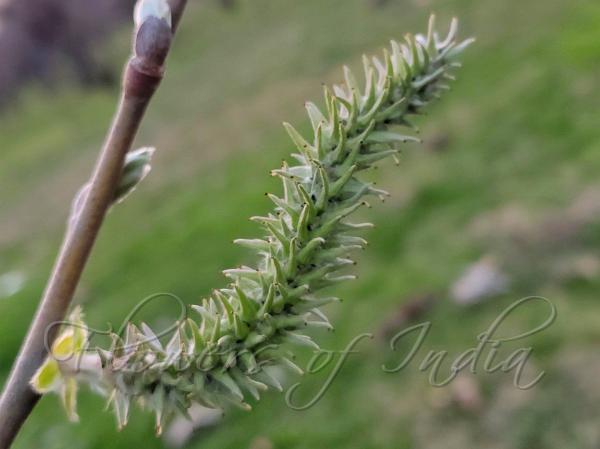|
| Persian Willow |
|

|

| File size | 477763 |
| Original date | 3/17/21 6:25 PM |
| Resolution | 4000 x 1844 |
| Flash | Flash did not fire, auto |
| Focal length | 4.74mm |
| Exposure time | 1/100s |
| Aperture | 1.79 |
| Focus Distance | |
| Metering Mode | Center weighted average |
| Camera make | Xiaomi |
| Camera model | Redmi Note 7 Pro |
| Sensor type | MonochromeArea |
|
|
|
|
Photo: |
Botanical name: Salix aegyptiaca Family: Salicaceae (Willow family)
Synonyms: Salix moschata, Salix medemii, Salix muscina, Salix moscata
Synonyms: Salix moschata, Salix medemii, Salix muscina, Salix moscata
Persian willow is a 2.5 to 10 m tall shrub or tree
with striped wood. The twigs are thick, red, with gray woolly hair up
to the second year and later hairless. The flower buds are egg-shaped,
6-9 mm long, 4-6 mm in diameter, blunt or pointed. Leaves have
kidney-shaped or half-heart-shaped stipules 1.5-6 mm long, falling off
early. Leaf-stalk is 4-12 mm long. Leaf blade is 5-15 cm long, 3-6 cm
wide, obovate to elliptical-lanceshaped, usually half as wide as long,
with a pointed or blunt end, a rounded to broadly wedge-shaped base and
a more or less wavy and irregularly sawtoothed edge. There are 15 pairs
of nerves. Both sides are initially hairy, the top later becomes
hairless and is then shiny green. The underside is blue-green and gray
haired pressed. The numerous catkins are up to 8 inches long,
cylindrical to ovate, sitting and densely shaggy hairy. They appear
even before the leaves shoot. The bracts are hairy silky, 2-3.5 mm long
and 1.5-3 mm wide. Male flowers have two stamens with 7-10 mm long,
about half-grown and hairy stamens at the base. Persian willow is
native to Iran, Iraq, Transcaucasus, Turkey, cultivated elsewhere.
Flowers: March-April.
| Identification credit: Gurcharan Singh | Photographed in Kashmir. |
• Is this flower misidentified? If yes,